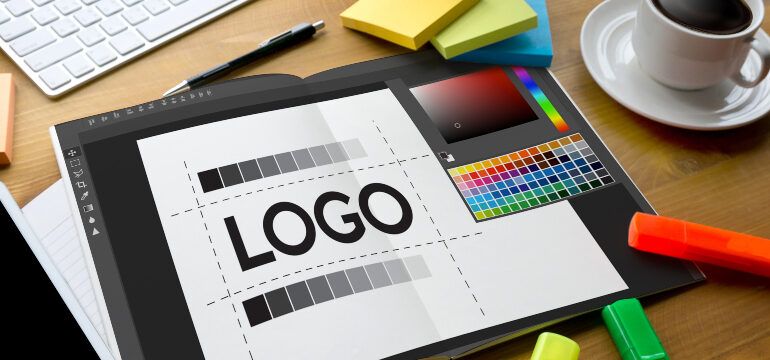Your logo is a symbol that identifies and represents you and your business. So, it’s important to consider all elements when designing, redesigning, or refreshing that look. A few members of PRIME’s award-winning design team recently offered some input on the design process. They also addressed when to update and ideas for making your logo look great. These suggestions can give you a better idea of how to make an impression with a solid logo.
THE PROCESS
The logo design process is often a complex one. Depending on the starting point, you may need to provide additional suggestions and feedback to ensure your logo includes most if not all the aspects you’ve envisioned.
FROM SCRATCH
When starting from the beginning with a new logo or a complete logo redesign, your design team may ask for specific ideas to help them effectively bring your vision to life. Narrowing down concepts and even colors can help your designer work more efficiently.
“We try to get input from the client to see if there’s a certain type or style of logo they’re after or what audience they’re targeting,” said Multimedia Designer Ben Redpath. He has helped design and redesign countless logos in his 10 years with PRIME.

The designer then weaves your suggestions into a handful of drafts to further zero in on the ideal logo.
“We’ll present five or six different ideas, usually with a couple of color combinations or fonts for each idea,” Redpath continued. “The client can then mix and match icons, colors, and fonts if something catches their eye. Or if there are ideas we can discard, that can be helpful, too.”
From there, the designer makes additional changes and presents updated options. “We often get to a logo design the client loves by the end of this round,” Redpath said.
And that finished design becomes the groundwork upon which to build and develop your name, noted Associate Art Director Alaina Wilkins.
“The best part about working with clients on a complete re-design is being able to connect with their company on all levels to establish standards that can translate onto all branding materials,” she added.
ALREADY ESTABLISHED
Reworking and refreshing a logo that already exists is almost always an easier route, Redpath noted.
“We know which elements the client likes and often need to implement only a few changes to make the logo feel current while maintaining its professional look,” he added.

Once again, the designer will make small adjustments to the current design and present a series of freshened-up looks to the client. “We’ll make adjustments to the line weights or overall shape of the icon and continue to make adjustments as requested to deliver the perfect final design,” Redpath said.
“In many instances, clients who choose to refresh over redesign have already established strong brand standards but may need adjustments to match updated target markets and business values,” Wilkins said.
WHY UPDATE?
While there is no expiration date on a logo, Associate Art Director Brian Lauer noted that evaluating your design every five or 10 years may help you determine whether the time is right for an update:
- Does it still feel current? You want your design to continue to appeal to your target market as their wants and needs expand and progress.
- Does it still represent your vision? Your objective may evolve as your company grows, so be sure your messaging stays consistent with the changing times.
One thing to keep in mind is that your longtime customers may have a strong connection to your original emblem. But with a revamped, solid logo, you can modernize your look without losing your dedicated base.
“One benefit of a refresh is that you maintain current brand recognition and similar brand standards. It can be more cost efficient when thinking about adjusting materials and advertising,” Wilkins mentioned.
Additionally, Lauer offered up some key variables that can lend a fresh look while maintaining that established customer affiliation.
“This could be as simple as updating the colors to more modern tones or removing some details that may be less relevant now versus five years ago,” he explained. “Fonts also play a big role in the timeliness of trends and how current a logo feels.”
Adding a modest element to polish the logo’s look is another way to update without creating significant shock, Lauer added.
And when it comes to making updates that really get noticed, fresh ideas are all but limitless. Lauer mentioned several techniques for turning a good logo into a great logo.
- Color. Choose bold, purposeful, or symbolic colors. Or choose to use no color at all, opting instead to make a statement in black and white.
- Simplicity. Look for ways to avoid excess and express more with less.
- Text. A confident, solid logo that can stand on its own to represent your name may not need text.
- Font. If your typography no longer feels relevant or commands attention, try switching it up, even just slightly. Add serifs or remove them. Try adjusting the font-weight property for a smoother, sharper, or bolder look.
Whether you are in the market for a refresh or redesign or if you’re just getting started, the design team at PRIME is ready to help you make an impression with a solid logo. We’ll work with you every step of the way to ensure your company is represented with a unique and impressive design. Contact us today to learn more or to get started on your new or renewed logo.




